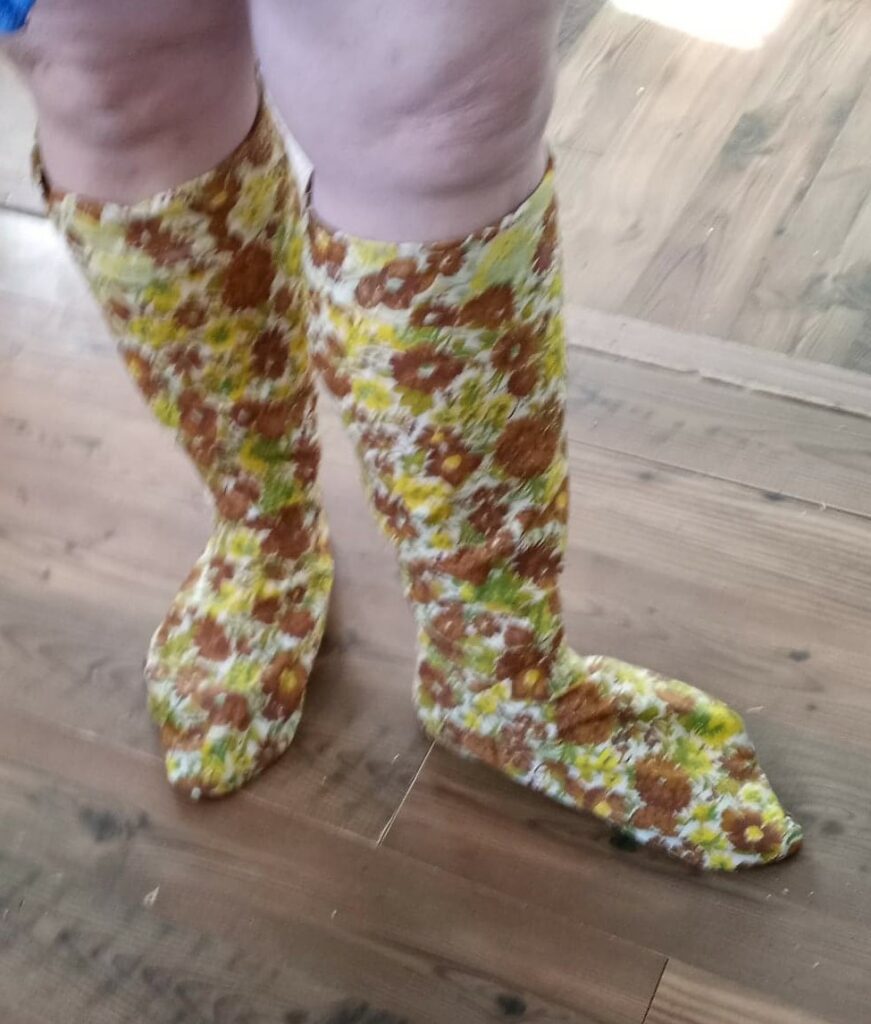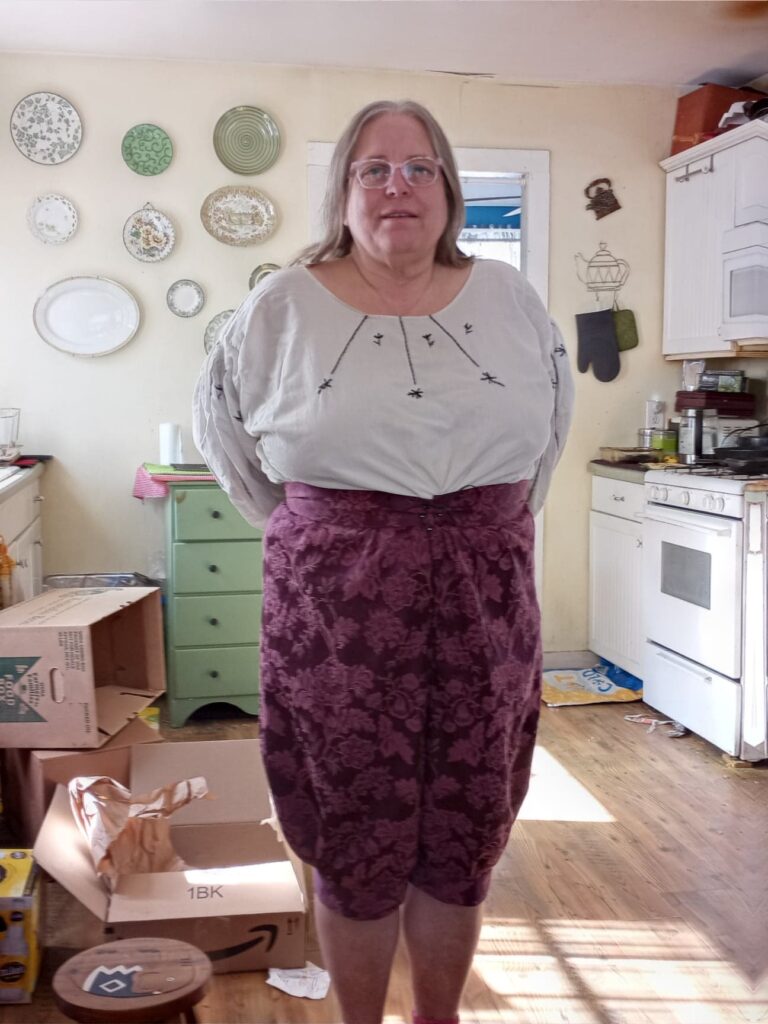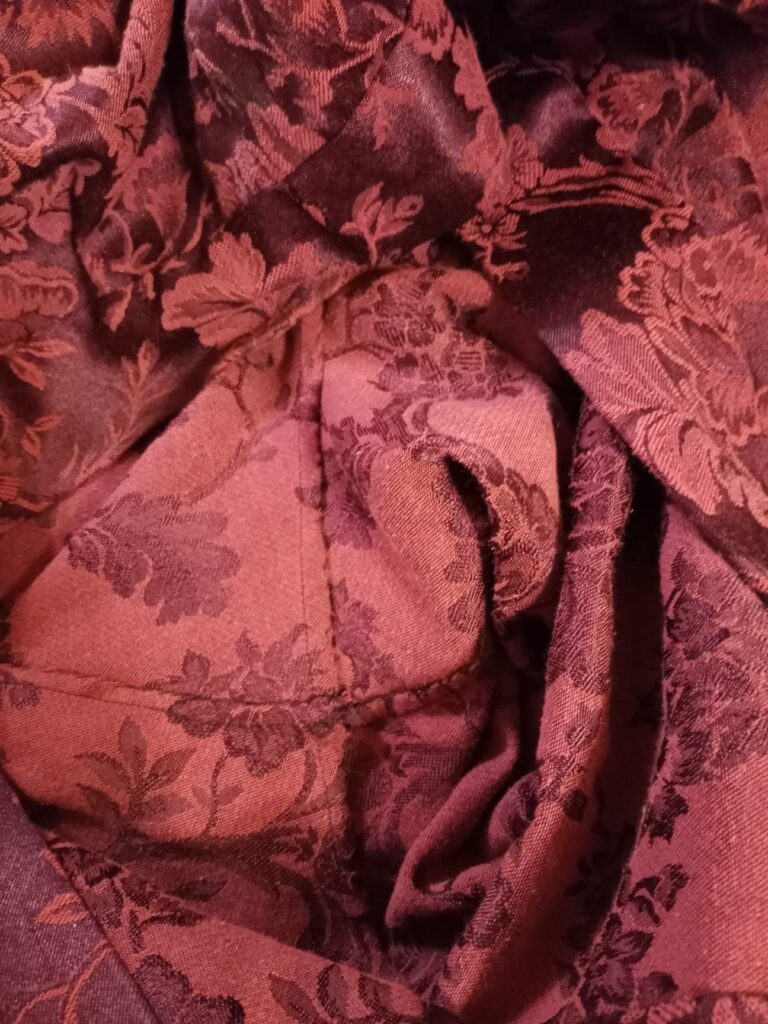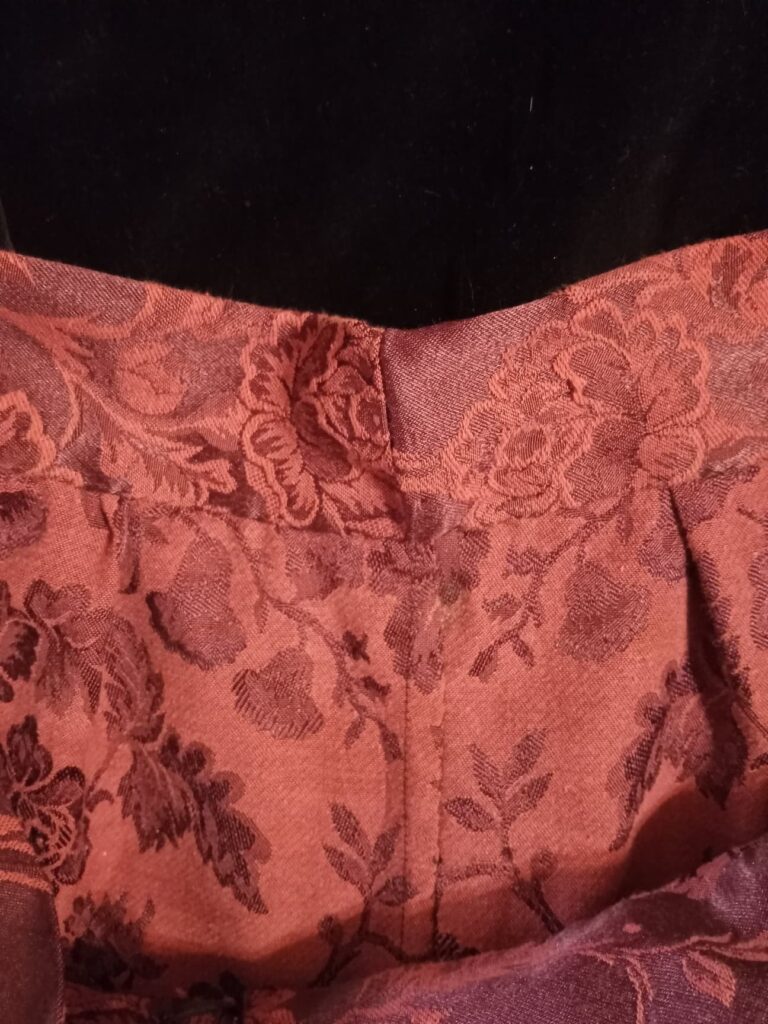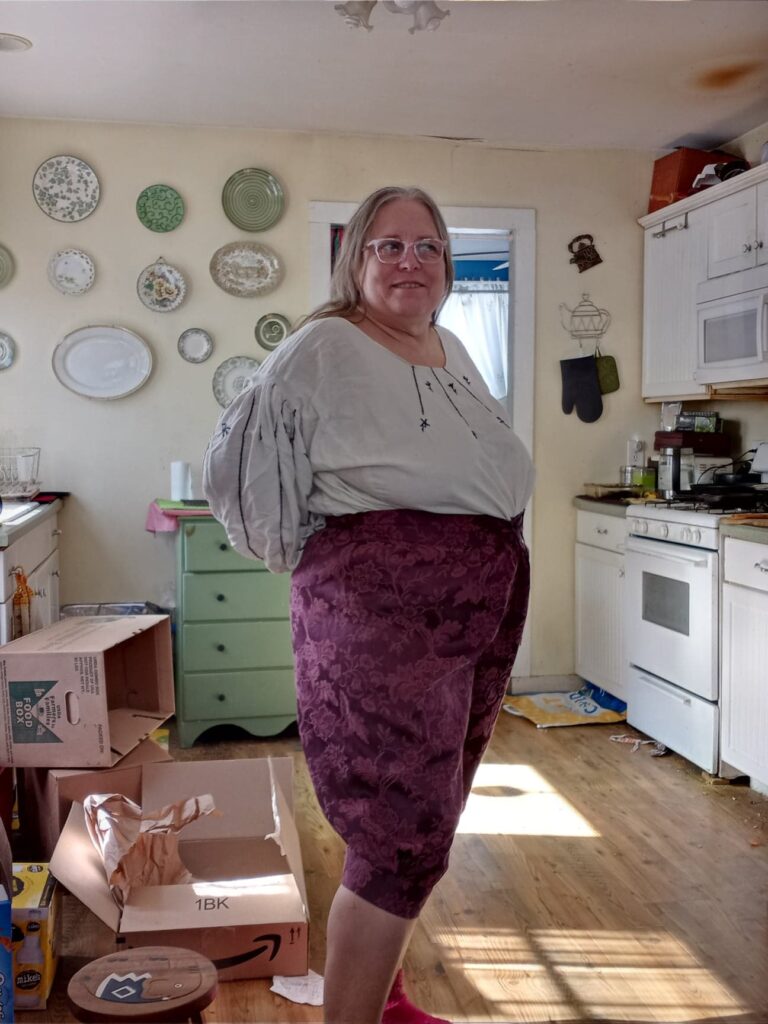This week I have finished my bloomers and partlet. I am very pleased with the diaphanous look of my partlet. Finishing the seams on my bloomers went quite smoothly, I am surprised what a difference it makes in how they hang. I have cut out and started finishing seams for my camica as well as my veil.
Finished seams at the junction of the legs and body.
Inside finish seams at the waistband in the center back.
Bloomers from the side.
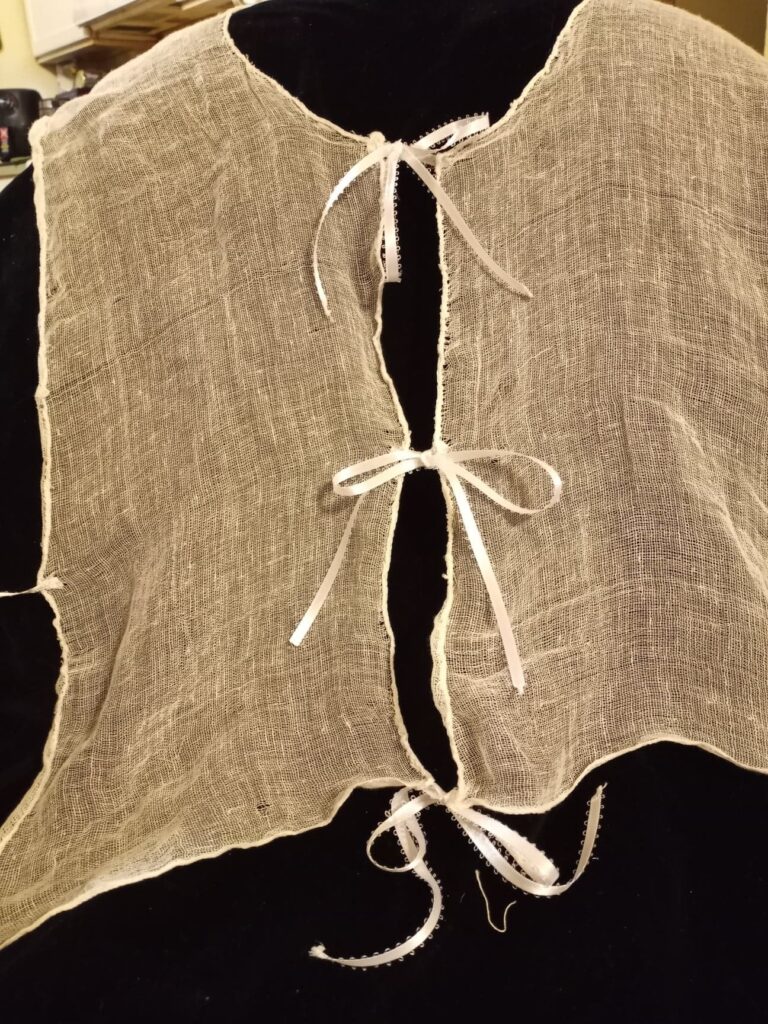
My camica veil and partlet are all made of cotton, which I have been told for years is not period correct, but in searching for a better camica pattern I stumbled into a rabbit hole of “Cotton is period?” For Italian Renaissance era it was widely used for bed covers/spreads, coverlets, quilts, pillow and mattress stuffing, mattress ticking, pillow ticking, canopy coverings, curtains, drapes, cotton tablecloths, napkins, towels, sails, tents, funerary coverings, mourning clothes, clerical vestments, outerwear mantles, gloves, veils, hoods, wimples, ribbons, purses, linings, coifs, doublets shifts and smocks. Pignolato was the Italian name for fabric made of all cotton. It was also widely used as blended fabric such as fustian, which was linen warp and cotton weft.
Popular moralists of the time preached about the vanity of wealthy women in using imported fabrics instead of indigenous fabric. As Vittoria Colonna was considered a very pious women, she would have likely use locally produced cotton for her underwear.
These are the rabbit hole sources for cotton being period.
Dickson, Brandy. “Cotton is Period? Really?” Brandy Dickson, 2004-2008.
http://evashistoricalcostumes.blogspot.com/p/article-cotton-in-the.html
http://www.shushanna.com/italian.html
